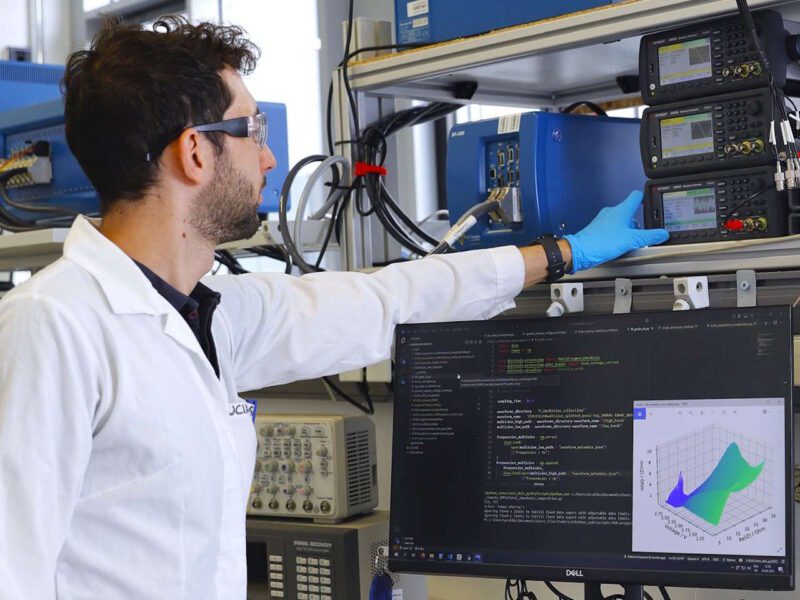German research organisation Fraunhofer has unveiled an innovative new method of measuring in real time the state of health of electric vehicle (EV) batteries, a development that could enable optimised battery management as well as make them safer and extend their lifespans.
The new method was developed by the Fraunhofer Institute for Manufacturing Technology and Advanced Materials (IFAM), one of over 70 institutes that make up the Fraunhofer group, and develops further a technique known as impedance spectroscopy.
Impedance spectroscopy is the most informative method of measuring a battery’s capacity and state of charge (SoC) and provides information to determine a battery’s state of health (SoH) and safety status.
However, impedance spectroscopy has previously been a lengthy process and has only been possible when the battery is in a resting state, meaning that it can take up to 20 minutes before the data is ready and available.
Researchers from Fraunhofer IFAM say they have now been able to create what they call ‘dynamic impedance spectroscopy’ which makes it possible to calculate measurements regarding a battery’s status during operation while also making the measurements available in real time.
This method is able to be used on lithium-ion batteries as well as solid-state, sodium-ion or lithium-sulphur batteries, and possibly even future technologies.
According to Fraunhofer IFAM, the information obtained with dynamic impedance spectroscopy “encompasses much more than simple data about the charge capacity or remaining operating time” and is able to provide “a detailed, accurate, and in-depth picture of what is going on inside the battery” and makes it possible to “predict the battery cell’s potential lifespan”.
Information available from dynamic impedance spectroscopy easily exceeds information currently available on battery charge status that is usually incorporated into an EVs electronics.
Dynamic impedance spectroscopy overlays a multi-frequency test signal on the discharging or charging current of the battery, making it possible to draw conclusions regarding the status of certain components or processes within the battery.
The response signal from the current and voltage is measured up to one million times a second, with all the data flowing into a data processing system running alongside, which informs a software program as it calculates the evolution of the impedance values, making it able to infer the status of the relevant battery cell.
The researchers also developed algorithms that make it easier to obtain results in real time from the massive amounts of data being pulled.
A battery management system that is capable of integrating real time impedance data will theoretically be able to register when a cell becomes locally overheated while driving, for example, and subsequently turn that cell off or reduce the power.
This avoids the needs for conventional temperature sensors placed on the outside of the battery cell, and which register thermal issues with a potentially costly and dangerous delay.
The same technology could also help with EV charging, helping to decide between the need for extra-fast charging or charging that is slower but reduces wear on the battery.
Such real-time monitoring of the battery state could also unlock the possibility of batteries being used in safety-critical scenarios, and could also be used for providers of renewable energy such as wind and solar farms.
“First, dynamic impedance spectroscopy opens up new possibilities for optimizing battery management, thereby extending the batteries’ lifespan,” said Hermann Pleteit, the project leader.
“It also paves the way for these batteries to be used in safety-critical applications.
“These kinds of systems could be used in ecofriendly electric aircraft, for example. This market is in its infancy right now. And the shipping industry is also signalling interest in the technology.”
Joshua S. Hill is a Melbourne-based journalist who has been writing about climate change, clean technology, and electric vehicles for over 15 years. He has been reporting on electric vehicles and clean technologies for Renew Economy and The Driven since 2012. His preferred mode of transport is his feet.

